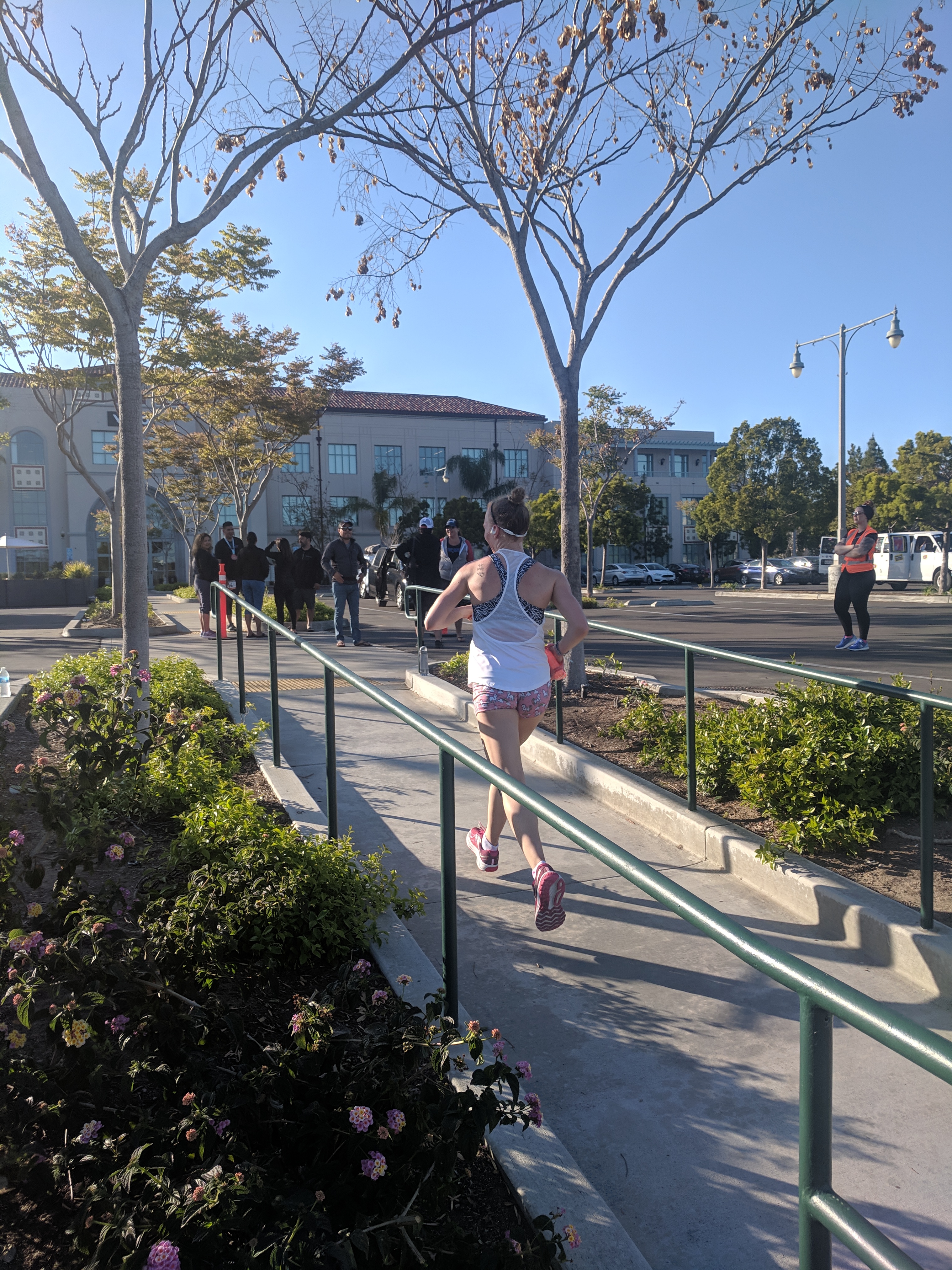Polarized training is one of the most common ways for runners to train.
Polarized means opposite so basically it means you do part of your training super easy and the other part hard, but don’t hang out in the middle.
Runners need to develop two things. The first, and most important, is a strong aerobic base. This is achieved through running slow, easy runs (conversational pace or your zone 2). If you’re a new runner, this should be your focus.
The second is working to increase VO2 max and lactate threshold. This will allow us to run faster for longer.
But that gray zone in the middle doesn’t offer much in terms of benefits. It’s called the gray zone for a reason. Now if you’re brand new and run all your runs in this middle zone, you will of course reap benefits. Any running is going to improve your aerobic capacity and endurance. But you’re missing out on the HUGE benefits of building that big aerobic engine. And if you’re a seasoned runner? Running in the gray zone will reap you next to no benefits.
So polarized training is clearly the way to go.
Ok, Becca, you’ve convinced me. So I just do half and half right?
Wrong.
Sorry.
The 80/20 Rule
The 80/20 rule is a common general rule of thumb when it comes to polarized training. Now as with everything this depends on each individual athlete. Some athletes may benefit from a slightly different distribution, but in general you want 80% of your runs to be easy and 20% to be hard.
So let’s say you’re running 30 miles per week. That would be mean 24 of those miles should be easy and 6 of those miles should be hard.
Again, I’ll bookend that with the caveat that it always, always depends. There are so many things that could affect this – your running history, your current goals, your physiology and how your body responds both to training and to recovery. As always, I recommend working with a coach so your program can be custom tailored to you since everybody is different.
Easy Runs
What exactly do I mean when I say 80% easy? Easy runs are in your Zone 2 heart rate zone, but you don’t need to know your zones to get this right. An easy run should be at a pace where you can hold a conversation. That might mean you have to take walk breaks if you’re just getting started. And you may have to slow way down – slower than you’re comfortable going.
For my seasoned runners, this can be a really hard thing to do. I struggled with it and still have to check-in with myself to make sure I’m actually running easy. Try not to look at your watch during these runs if you’re like me and get in your head about your pace. Truly go off of effort.
Your easy pace won’t always be the same. There are so many factors that affect our easy effort pace. If we had a hard workout the day before we haven’t fully recovered from, if you got shit sleep the night before, maybe you didn’t eat enough carbs before your run or the day before, maybe you’re under a lot of work and/or home stress. All of these things affect our bodies in different ways.
So forget about pace and start focusing more on how the run feels.
Hard Runs
Okay, we know what easy runs are now and what percent of our weekly volume should be easy. So now let’s define a hard run. A hard run is, well, hard.
Think things like intervals, track workouts, tempo runs, hill sprints, etc.
These workouts would be an 8 or 9 in difficulty on a scale of 1-10.
Now this doesn’t mean to go out and run for 40 minutes as hard as you can. Start with short intervals with plenty of recovery time in between to build up. You can gradually add in longer tempo workouts to start to build your bodies ability to clear lactate out of your blood.
When we work at high intensity, the body generates lactate very quickly. If we are working above our lactate threshold that means the body can’t clear the lactate faster than it’s accumulating. Then we fatigue quickly and have to slow down or stop. By starting with short bursts and slowly building we are teaching the body how to clear lactate more efficiently. The more efficiently we can clear lactate the longer we can run at faster paces.
These runs are also working on increasing our VO2 max, which is the maximum amount of oxygen our body can process at one time. If we can process more oxygen, we can run faster for longer. Make sense?
But these workouts are HARD and require a lot of recovery time. That’s why only 20% of your work for the week should be at this intensity. You want to be sure you are recovering enough in between these hard sessions. Too much too soon can lead to injury.

Had you heard of polarized training before reading this? If not, are you going to try it out?
Remember: this post is for informational purposes only and may not be the best fit for you and your personal situation. It shall not be construed as medical advice. The information and education provided here is not intended or implied to supplement or replace professional medical treatment, advice, and/or diagnosis. Always check with your own physician or medical professional before trying or implementing any information read here.
Want to learn more about how to apply this?
Let’s set up a call! Click below and schedule your free consultation!

0 Comments